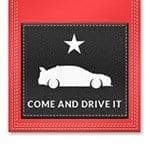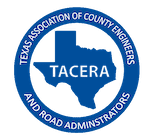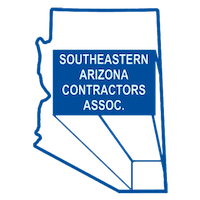Let’s be honest: driving through work zones is one of those things that’s almost universally disliked. Being forced to lower your speed, sit in bumper-to-bumper traffic, and travel over rough roads is no fun, so it’s understandable that many drivers get frustrated when they see those distinctive orange signs.
There is no excuse for being reckless while passing through a work zone. Here are some tips (and rules) to remember the next time you find yourself in an area that’s under construction; take them into consideration to help keep yourself, your passengers, other drivers, and road workers out of harm’s way:
Slow Down
When you enter a work zone, there will be a posted speed limit that’s noticeably lower than the normal speed limit on that road. Highways will often have a limit of 45mph in a work zone, while roads in (sub)urban spaces may post a limit of 25mph. These limitations are designed to provide a measure of safety to workers in the area. After all, the slower you’re going, the more time you have to react to unexpected pitfalls, and the less likely you are to have a collision.
One of the most common excuses people give when they’re caught speeding in a work zone is that they didn’t “want to be late” to wherever they were headed. But here’s some simple math to mull over: when traveling at a speed of 25mph, it takes a little less than 5 minutes to travel two miles. At 35mph, it takes a little less than 3.5 minutes to travel that same distance. This means that, if you speed through a two-mile work zone by going 35mph in a 25mph zone, you’ll only manage to shave a whopping 90 seconds off of your commute. Unless you’re in the midst of a medical emergency of some kind, then the risks of speeding through that stretch of road nearly always outweigh the potential benefits!
Obey Flaggers
If you’ve ever come to a construction zone and found yourself momentarily confused as to where you’re supposed to go, you’re definitely not alone. Construction projects can turn familiar roadways into a veritable labyrinth of cones, barrels, and barriers, so the “correct” way to navigate your route isn’t always immediately obvious. The good news, though, is that in situations that are truly puzzling (or could become dangerous if drivers are left to their own devices), there will usually be a construction worker directing traffic.
If you see a flagger with a sign, always defer to their instructions rather than following the “standard protocol” for that street. Their entire job is to guide drivers through the work zone safely.
Stop Slow Paddles are sometimes used to help negotiate traffic when one side of the street is closed off; treat the ‘stop’ side like a red traffic light, even if you don’t see any oncoming cars!
Stay Alert
This one should go without saying; it’s actually very good advice anytime you’re behind the wheel of a car.
Staying alert is particularly significant if you’re in a work zone. When a road is under construction, you might need to stop abruptly, merge lanes without much warning, make detours, or even swerve to avoid detritus in the road. These obstacles are easy enough to navigate when you’re paying attention, but if you’re not, then you can wind up in an embarrassing—and potentially dangerous—situation.
So, whenever you see those signs indicating that you’re about to enter a work zone, put away your phone, turn down your music, and keep your eyes and mind focused on the road. Don’t be afraid to ask your passengers to pipe down for just a moment, either, if the conversation inside the car has become distracting.
Back Off
In ideal weather conditions, you should obey the two-second rule, and during bad weather, you should increase your following distance even more.
The most frequent type of car accident in construction zones is rear-end collisions; these usually happen when one car brakes suddenly and the car behind them doesn’t have enough time (or room) to stop. If you avoid tailgating the car in front you, you may be able to avoid becoming a statistic.
Be especially wary when you’re driving behind construction vehicles. Large trucks and other heavy equipment tend to have limited rear visibility, meaning that it can be difficult (or impossible) for drivers in these machines to see cars that are following very closely behind them. Secondly, it’s not uncommon for these vehicles to “shed” rocks and other debris as they make their way down the road. Crowd them, and you might find yourself with a cracked windshield—or worse.
You don’t have to “like” traveling through work zones in order to follow the rules. Exercising caution is simply an essential part of being a safe, careful driver. So please be mindful (instead of resentful) the next time you see a “ROAD WORK AHEAD” sign on your daily commute. It may help to remember that workers on roads are humans, too.
Share Your Tip
Do you know how to safely navigate work and construction zones – then share your tip with the world! We want to hear your best tips and tricks for avoid traffic and traffic accidents. All you have to do is send us your tip using this form and we will feature you on our blog!
Alan at comeanddriveit.com
 You have to keep your head on a swivel and predict what might happen. There’s a lot of moving pieces and it’s easy for them to make a mistake. Assume that something might dart out, slow down, and be vigilant. Dropping a minute off your commute isn’t worth endangering the workers, yourself, or the ticket.
You have to keep your head on a swivel and predict what might happen. There’s a lot of moving pieces and it’s easy for them to make a mistake. Assume that something might dart out, slow down, and be vigilant. Dropping a minute off your commute isn’t worth endangering the workers, yourself, or the ticket.
For more information about construction zone safety paraphernalia—including product overviews and a full catalog of our equipment offerings—please visit the official Transline Industries, Inc. website.












